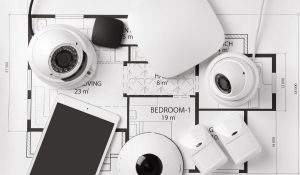In the digital age, where privacy is of utmost importance, it’s essential to be aware of the potential presence of how to find listening bugs in your house. These tiny devices, also known as spy listening devices, can be strategically placed to eavesdrop and invade your personal space. In this blog post, we will explore various methods and techniques to help you detect and find listening bugs in your home.
I. Understanding Listening Bugs
Listening bugs are covert devices designed to capture and transmit audio signals without detection. They come in different forms, including wireless bugs, wired bugs, and GSM bugs. Wireless bugs operate through radio frequency signals, while wired bugs are physically connected to an audio source. GSM bugs utilize mobile phone networks for transmission.
To identify potential listening bugs, keep an eye out for signs like suspicious activities or unexplained noises or interference on electronic devices. If you have reasons to believe that your house is being bugged, it’s crucial to take appropriate action to ensure your privacy and security.
II. Signs of a Listening Bug
Finding a listening bug might not always be straightforward, but there are a few signs that can indicate their presence. These signs can be physical or behavioral and should be taken seriously.
Physical signs:
1. Unusual objects in the house: Look out for unexplained objects that seem out of place, such as innocuous-looking household items that could contain hidden listening devices.
2. Changes in furniture or item placement: If you notice objects or furniture being moved slightly or disturbed regularly, it may be a sign that someone has been tampering with them to install or retrieve a bug.
3. Suspicious wires or devices: Keep an eye out for oddly placed wires or devices that don’t seem to have a clear purpose. Hidden cameras or recording devices may also be disguised as harmless objects like clocks or smoke detectors.
Behavioral signs:
1. Unusual interest from strangers: Be cautious if strangers show an unusually keen interest in your activities, conversations, or personal matters. They might be attempting to gather information for malicious purposes.
2. Sensitive or confidential information leakage: If you suspect sensitive information getting into the wrong hands or being used against you, it could be an indication of a listening bug transmitting your conversations.
3. Feeling constantly watched or monitored: Trust your instincts and pay attention to any uneasy feelings you have in your own home. If you constantly feel like you’re being watched or monitored, it’s worth investigating further for the presence of listening bugs.
III. Tools and Techniques for Finding Listening Bugs

If you suspect that your house may be bugged, it’s time to take action and conduct a thorough search for listening devices. Here are some tools and techniques that can assist you in this process of finding bugs in your house:
Identifying bug detection tools:
1.Radio frequency (RF) detectors: RF detectors are portable devices that can help you identify and locate bug transmitters by detecting radio frequency signals. They are effective in detecting wireless bugs.
2. Infrared detectors: Infrared detectors can detect heat signatures emitted by hidden devices. They are useful for finding bugs that may be disguised as common household objects.
3. Non-linear junction detectors: Non-linear junction detectors help in locating bugs by detecting electromagnetic emissions from bug transmitters. They are effective in identifying wired bugs.
Step-by-step bug detection process:
1. Choose the right environment for bug detection: Find a calm and quiet space where you can focus without distractions. Turn off electronic devices that emit signals to avoid interference during the detection process.
2. Conduct a physical search: Start by visually inspecting your surroundings and looking for any physical signs of listening bugs, as mentioned earlier. Use a flashlight to scrutinize dark corners and hidden spaces where bugs could potentially be hidden.
3. Use bug detection tools to scan the area: Begin with the RF detector, sweeping it across the room and listening for any signal alerts. Pay close attention to areas near electronic devices, ceilings, and walls. Use an infrared detector to identify any unusual heat patterns or abnormalities. As a final step, use a non-linear junction detector to scan for electromagnetic emissions.
4. Identify suspicious signals and confirm bug presence: If any of the bug detection tools indicate the presence of a signal, investigate it further. Pay attention to any unusual or erratic signals that could be emitted by a listening bug.
IV. Tips for Protecting Your Privacy
Prevention is key when it comes to safeguarding your privacy from potential bugging devices. Here are some tips to help you protect your home and maintain your privacy:
1. Secure your Wi-Fi network: Use a strong and unique password for your Wi-Fi network to prevent unauthorized access. Regularly update the router firmware to protect against security vulnerabilities.
2. Regularly check your home for bugs: Make bug sweeping a regular practice. Check your surroundings periodically for any physical signs or unusual activities that might indicate the presence of listening bugs.
3. Be mindful of potential vulnerabilities: Avoid discussing sensitive information or personal matters where bugs may be present. Choose secure communication channels, and be cautious with whom you share your information.
4. Encrypt electronic communication channels: Use encryption tools and secure messaging apps to protect your conversations and sensitive data from interception.
5. Seek professional assistance if needed: If you have reasons to believe that your house is bugged, it is advisable to seek assistance from professional bug-sweeping services or private investigators who specialize in dealing with such situations.
V. Legal Considerations

It is important to be aware of the legalities surrounding the use of listening bugs. Laws regarding privacy and consent differ from country to country. Before taking any action, be sure to familiarize yourself with the laws governing the use of surveillance devices in your jurisdiction.
In general, it is illegal to use listening bugs without the consent of the parties involved. If you discover a listening bug in your house, document it carefully and seek legal advice on the steps you should follow to protect your rights.
VI. Conclusion
Ensuring your privacy and security at home is crucial in today’s digital age. By understanding the signs of a listening bug and utilizing the right tools and techniques, you can protect yourself from potential intrusions. Regular bug sweeps, securing your communication channels, and being mindful of potential vulnerabilities are essential steps in maintaining your privacy.
Remember, if you suspect the presence of listening bugs and are unable to handle the situation yourself, it is recommended to seek professional assistance from bug-sweeping experts or private investigators. By taking proactive measures and staying informed, you can create a safe and secure environment for yourself and your loved ones.
Invest in your peace of mind and protect your privacy today!



